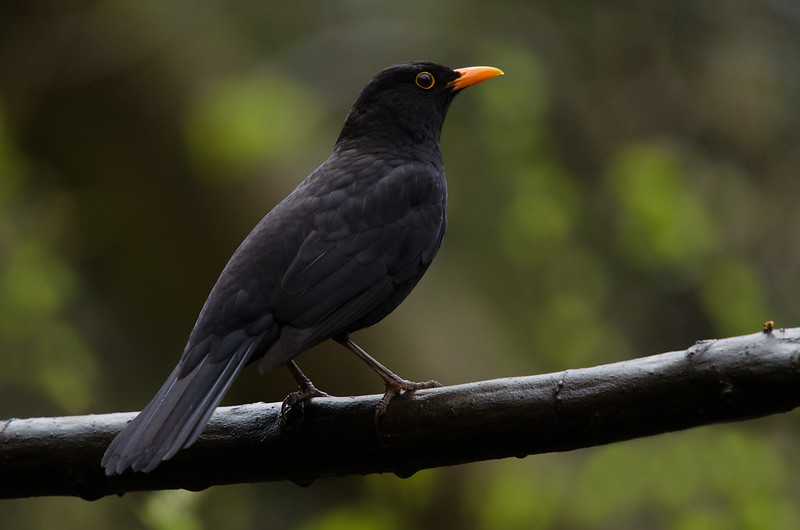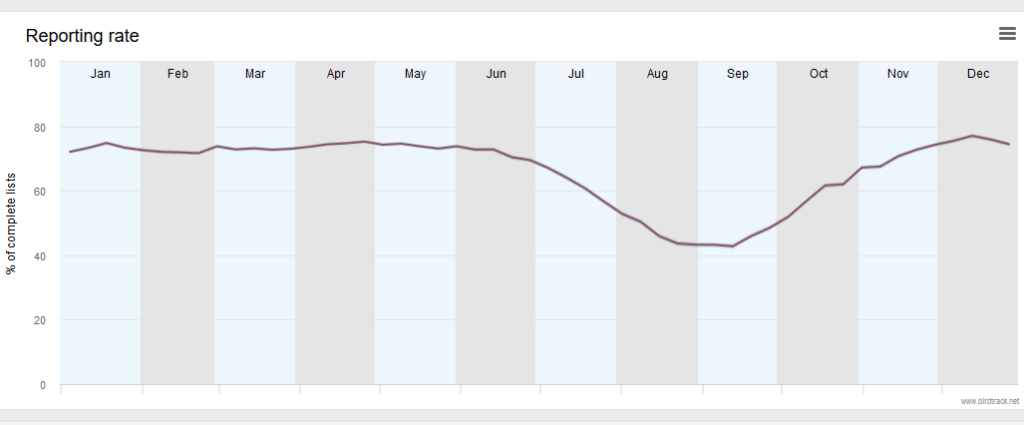

Yesterday’s Birdtrack reporting rate graph was Blackbird. The biggest clue is the high reporting rate through the year.
As with all the reporting rate graphs (reporting rate is the proportion of all complete lists of birds in which the species is recorded) the shape of the graph is affected by where birders go and what birds there are, and how noticeable the species are.
I looked up this reporting rate graph because I encountered a young Blackbird, maybe a week out of the nest, in the garden and I hadn’t seen a young Blackbird for weeks. Back in April and May there were young Blackbirds all over the place. I can be fairly sure this Blackbird wasn’t hatched in our garden, or very nearby, as I haven’t seen adults carrying food for ages either, nor alarm calling when the neighbour’s cat is around.
It’s possible to make up a story to explain any of these reporting rate graphs but I find it interesting that the rate falls so much, it almost halves, in late summer. Certainly Blackbirds have stopped singing and seem very inconspicuous here with me, but they must still be there, and probably in large numbers. Life is perhaps easy in these summer and early autumn weeks? A quick peck at some windfall apples, a blackberry or two, yank up an earthworm or two and smash a snail and that’s the work done for the day?
But it won’t be long before our Blackbirds are joined by continental birds and the evenings will get quite shouty again at roosting time.
What species do you think produces this reporting rate graph?

Answer tomorrow.
[registration_form]
It had to be a common bird. Although very common in gardens and woodland, they would be rarer on wetlands and shorelines, and hence the 70%ish. When the moulting season comes around (late summer/early autumn) they stop singing and start skulking. The moult means they lose flight feathers at some stage (although not all at the same time), which means they are not as agile, and then they are more prone to predation. Thus they try their best to keep well hidden. Given their prevalence, it appears to be a successful strategy.
My bets were on blackbird or robin. Without peeking at the BTO graphs. I’ve only just checked the one for robins and it is not that dis-similar. I’m awarding me a “I was right”.